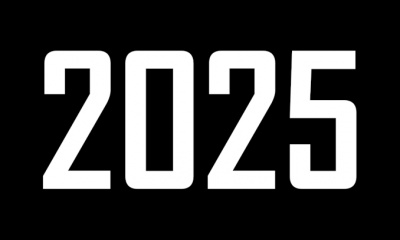2015 was an eventful year in comics news, with lots of stories capturing our attention. Here’s my list of the most important events and trends from the past 12 months.
Charlie Hebdo Massacre Puts Comics in the Crosshairs. It feels like a long time ago, but the attack on the offices of a French humor publication took place on January 7 of this year. Two extremists identified as part of Al-Qaeda in Yemen shot their way into the Paris offices of the publication, killing 11 people and injuring 11 more. Among those lost were cartoonists Jean Cabut ("Cabut"), Philipe Honoré, Bernard Verhlac ("Tignous") and editor-in-chief Stéphane Charbonnier ("Charb") (see "Jihadis Target French Cartoonists"). It was, until recently, the most heinous act of terrorism on French soil in modern times.
The violence against the satirical French magazine made comics a flashpoint in a global battle between modernity and religious extremism. It kicked up an argument about the role of satire, "blasphemy," privilege and divisions in European society. It also put the fringe publication on the radar of comics fans worldwide. "Je Suis Charlie" became a cri-de-coeur of creators and allies, and the subsequent issue of the publication increased its distribution from 60,000 to nearly 8 million.
DC Moves to Burbank, Bombs with Convergence. DC Entertainment completed the most tangible aspect of its ongoing integration with Time Warner by physically moving its operations from New York to Burbank, California. The move was announced in October, 2013 but actually took place this past spring. According to Bleeding Cool, 70 of DC’s 147 New York-based staff made the move and 77 left the company.
But nearly 80 years of history in NYC is not all DC left behind. Convergence, the company’s big crossover event, meant to serve as a Band-Aid to patch up storylines while staff transitioned to their new digs, was a near catastrophe from both a creative and business perspective. DC lost market share to Marvel, whose Secret Wars was a more successful implementation of the same story premise, but the Diamond sales numbers might not tell the whole story. Every comic store I went into had piles and piles of these books sitting on the shelves, and store staff told me the event was driving away even longtime DC readers. At the moment, I don’t have anything but anecdotal evidence for how big a bomb Convergence was, but here is as good a place to ask as anywhere: did any retailers do well with this?
Con-solidation Continues. This year’s convention season began with the announcement that Seattle’s Emerald City Comic Con, one of the largest and most successful independently run shows in the US, had been acquired by ReedPop (see "ReedPop Acquires Emerald City"). It ended with the announcement that LeftField Media, founded by a former ReedPop VP, had acquired Washington, DC’s up-and-coming Awesome Con (see "LeftField Media Acquires Awesome Con"). Meanwhile, Informa, the company that runs Canada’s Fan Expo shows, scooped up Orlando’s MegaCon in April, after picking up Dallas Comic Con last year (see "Con Roll-Ups Accelerating"). That leaves Salt Lake City and Denver (a non-profit), as the largest remaining independent conventions in North America, unless you count San Diego Comic-Con as independent.
The big con companies – ReedPop, Informa, Left Field and Wizard World – all grew organically as well as through acquisition in 2015. Big cons got bigger, small cities got cons of their own, and American comic culture leapt across the ocean to Paris, Shanghai, New Delhi, Sao Paulo and Vienna.
At the same time, small shows seemed to prosper as well. Comics Crossroads Columbus made a strong entry into an increasingly crowded field of small press shows and arts festivals. Comics and graphic novels continued to expand their footprint at library, academic and mainstream publishing trade shows.
Things grew so much and so fast in 2015 that we are once again left wondering how much gas is left in the tank, and is a shakedown at hand in 2016?
Ta-Nehisi Coates Named to Write Black Panther Amid Ongoing Diversity Dialogue. The expanding demographics of the comics audience has added fuel to the perennial problem of the comics industry: how do you increase the diversity within the creative and editorial ranks so that all readers can see their perspectives and experiences reflected in the stories?
Marvel Entertainment’s solution was to hire the most acclaimed African-American intellectual on the scene, National Book Award winner and Atlantic Magazine contributing editor Ta-Nehisi Coates, to write a new Black Panther series (see "'NY Times' Bestselling Author to Write Ongoing 'Black Panther' Series"). That’s a big, exciting announcement, but hard to scale industry-wide. Meanwhile, promising creators of color are finding success outside traditional publishing models. This will be one to watch in 2016 and beyond.
Star Wars Saves the Retail Universe (Again). A long time ago in a galaxy called 1977, Marvel took a flier on a licensed title for a soon-to-be-released science fiction movie called Star Wars and ended up hitting a sales jackpot that rescued the fortunes of the company during a period of rising costs and distribution problems.
This year, Star Wars isn’t exactly a longshot: it’s about to become the most lucrative franchise on just about every planet. Disney, which owns both Lucasfilm and Marvel, has the transmedia strategy running like clockwork, with a healthy mix of ongoing series, miniseries and special editions dotting the retail shelves all year. According to ICv2, Star Wars #1 sold nearly a million copies (including a big LootCrate placement) in January – nearly 10x the next-best selling comic. Princess Leia joined the ongoing series at the top of the charts in March, and the Shattered Empire miniseries helped Star Wars titles take 3 of the top 5 slots in September.
Fans come to comic stores for the tie-in comics but also pick up merchandise by the armload – a trend that’s only going to increase once the movie opens later this week. That, along with the Dark Knight bounce from DC, is probably enough to end the year on a high note for retailers.
--Rob Salkowitz (@robsalk) is the author of Comic-Con and the Business of Pop Culture.
The opinions expressed in this column are solely those of the writer, and do not necessarily reflect the views of the editorial staff of ICv2.com.

Column by Rob Salkowitz
Posted by Rob Salkowitz on December 14, 2015 @ 9:40 pm CT
MORE COMICS
Award-Winning Noir Manga by Suehiro Maruo Returns as Paperback
January 9, 2025
The award-winning noir manga by Suehiro Maruo will return in paperback format.
To Fund Further Expansion
January 9, 2025
Live shopping platform Whatnot has raised $265 million in Series E investment to fund further expansion.
MORE COLUMNS
Column by Rob Salkowitz
January 6, 2025
Columnist Rob Salkowitz predicts, "…[W]e're heading for the most predictably unpredictable stretch of history in most of our lifetimes."
Column by Scott Thorne
January 6, 2025
This week, columnist Scott Thorne lays out his predictions for 2025.








